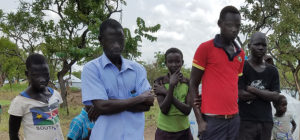Below is an excerpt from an op-ed by Mike Brand just published by IRIN:
“There are no opportunities for youth here,” said Yar, a 20-year-old South Sudanese refugee from Jonglei, stuck in the Nyumanzi refugee settlement in northern Uganda.
Her words were echoed in conversations I had throughout my two-week visit to the settlements.
Since war broke out in South Sudan in December 2013, approximately four million people, one third of the fledgling nation’s population, have been forced to flee their homes.
Today, half of those who’ve fled are living as internally displaced persons in South Sudan, and the other half have become refugees in neighbouring countries, especially Uganda.
Uganda now hosts more than one million South Sudanese refugees and more cross the border every day, fleeing violence, insecurity, and drastic food shortages in their native country.
Yar arrived in Uganda in 2014. She lost most of her family in the war and is now living alone in the refugee settlement, without much hope for the future.
“There is no opportunity for youth to study in secondary school or to get jobs,” she told me. “Young people are just sitting around doing nothing.”
The issue of youth idleness was a recurring theme in nearly all my conversations: with refugees, NGO representatives, the UN refugee agency, UNHCR, and the Office of the Prime Minister, or OPM, which coordinates the refugee response in Uganda.
Approximately 61 percent of the South Sudanese refugee population in Uganda is under the age of 18. With no signs of South Sudan’s ethnically driven civil war ending anytime soon, some refugees could be displaced for 10 to 20 years, or more.


